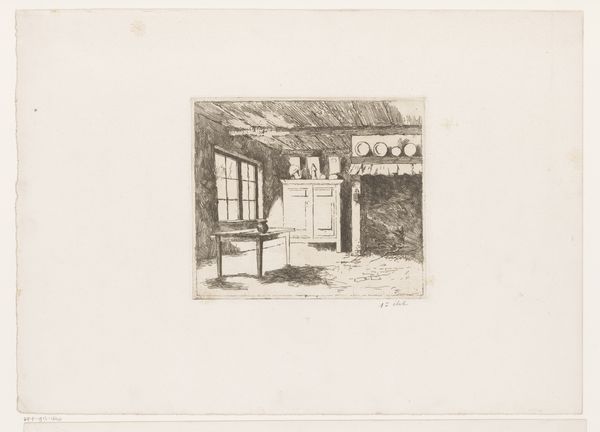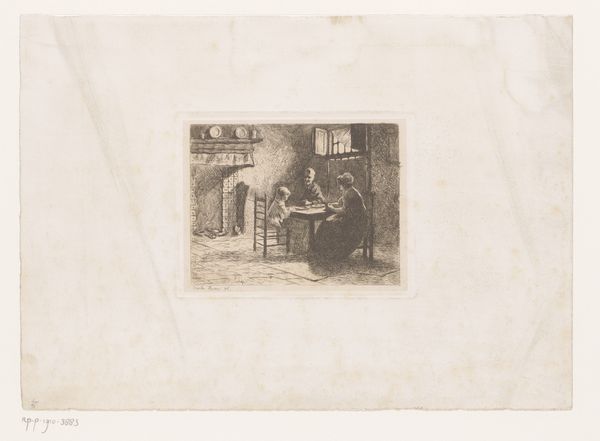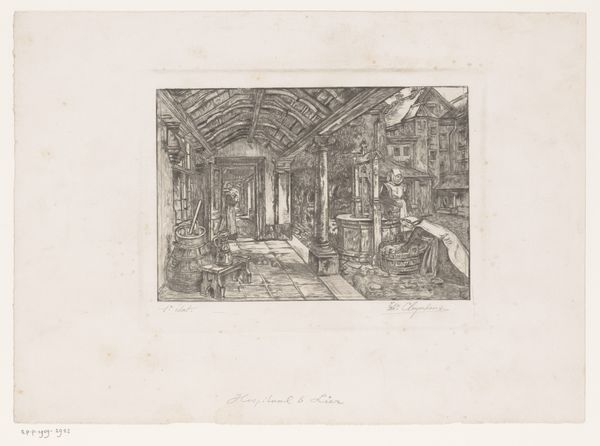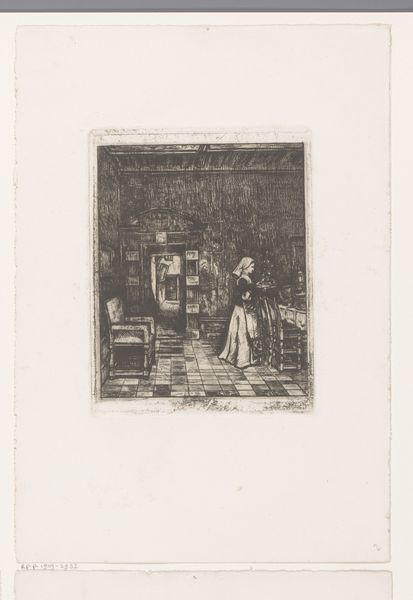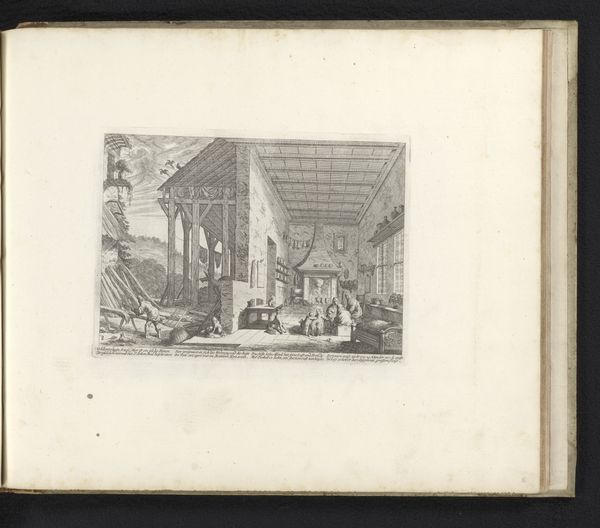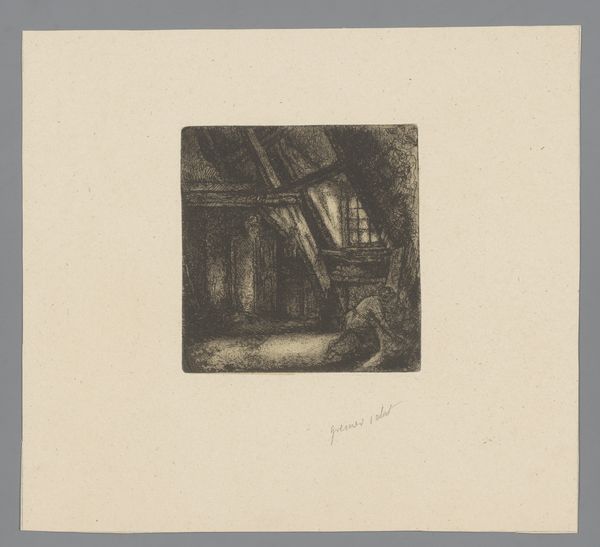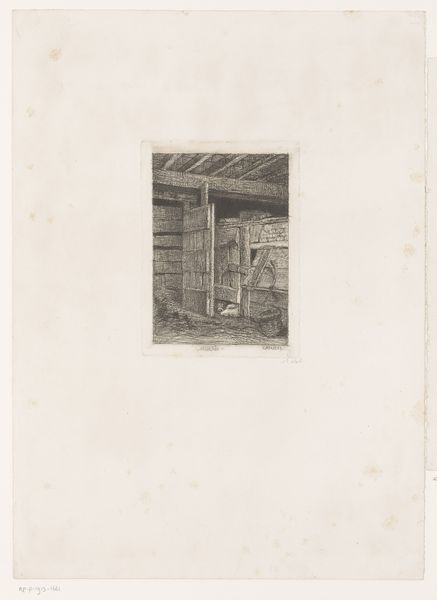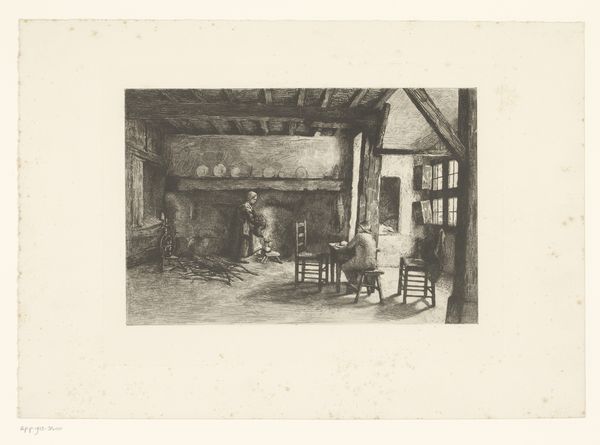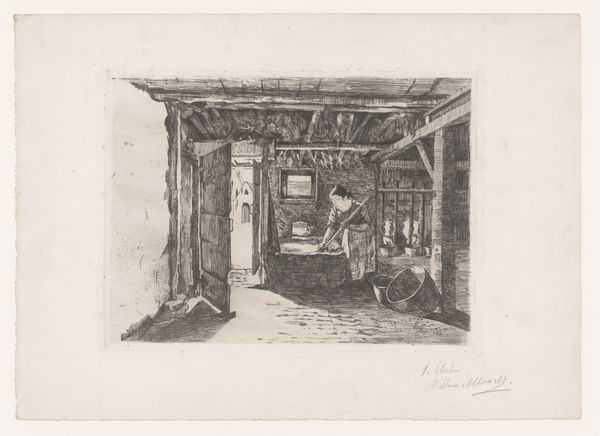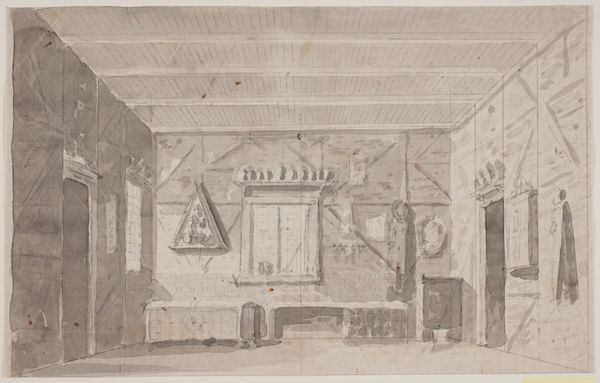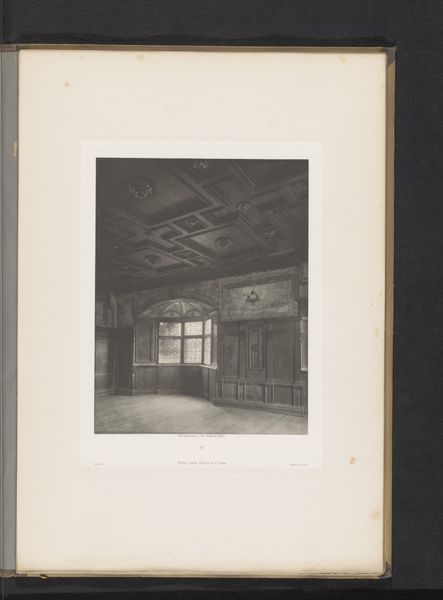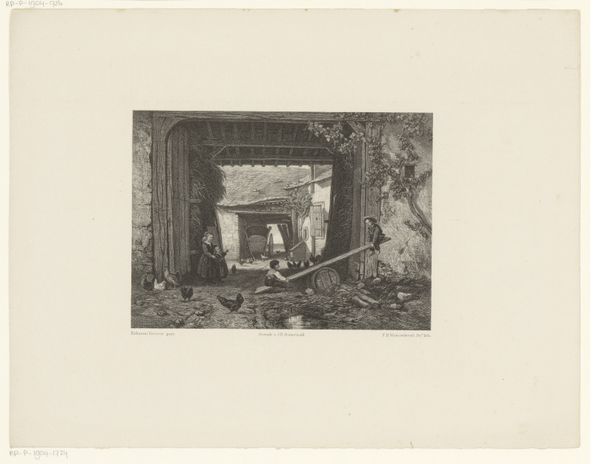
drawing, print, etching, paper, ink
#
drawing
# print
#
etching
#
paper
#
ink
#
genre-painting
#
realism
Dimensions: height 136 mm, width 159 mm
Copyright: Rijks Museum: Open Domain
Curator: Charles Mertens created this etching, “Young Man Sitting in a Room with a Large Fireplace," in 1883. Editor: There's a sense of stillness here; a solitary figure almost swallowed by the dark, warm interior. I see it rendered mostly in black ink with subtle contrasts and shadows, giving it an intimate quality, yet somber in tone. Curator: Absolutely. Mertens, working in the style of Realism, was capturing the life and environment of ordinary people. Note how the domestic interior isn't idealized; instead, it reflects a simpler, perhaps even harsh reality. It reflects social realities through interior scenes. Editor: I'm immediately drawn to the hearth. It feels like a visual anchor, an age-old symbol of warmth and security. I’m also curious about the plates arranged on top of the wardrobe: an image of domestic bliss. Do you read a connection there? Curator: Precisely. In 19th-century Dutch homes, open hearths such as these were both practical necessities for heating and cooking, and central social spaces in working class environments. Notice how this work lacks the typical narrative punch of other examples of Realism at this time, inviting viewers into the young man's contemplative mood as we appreciate these material symbols and details. Editor: The young man appears isolated though, even lost in his thoughts. The symbol of a warm domestic life seems somewhat disrupted by his detached demeanor. Curator: Maybe the artwork reflects a larger cultural narrative about youth in 19th century, showing their roles between home life and expectations, or feelings of not belonging. Considering that Mertens was active within the Hague School, these works capture a common fascination of domestic scenes among contemporary middle-class audiences. Editor: Fascinating how such a small etching, essentially an everyday scene, can offer such rich symbolic insights into the personal and collective experience of 19th-century life. Curator: Indeed, art often uses common things in life to present narratives about those who experience them. By analyzing pieces like these, it can remind viewers of certain important moments, figures, or settings throughout history.
Comments
No comments
Be the first to comment and join the conversation on the ultimate creative platform.
